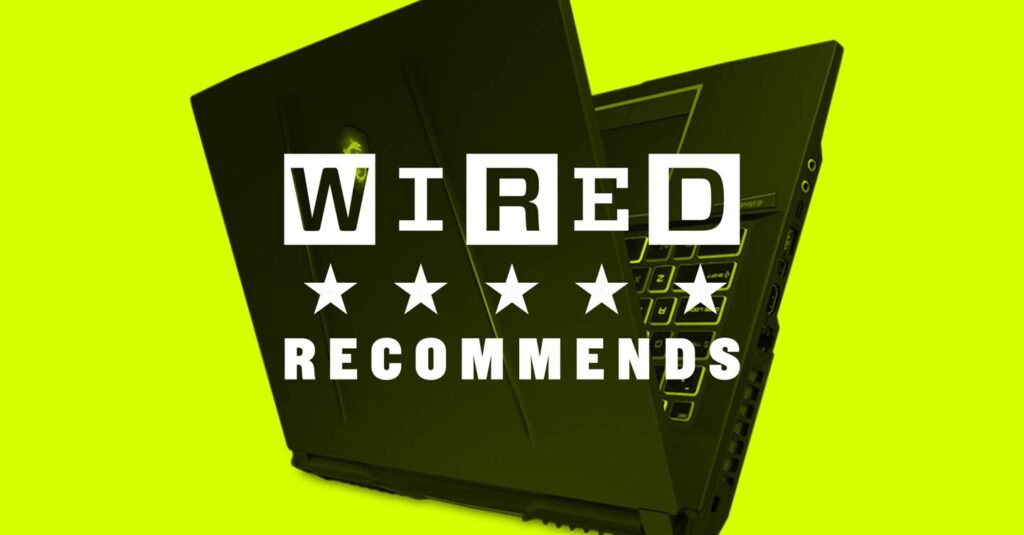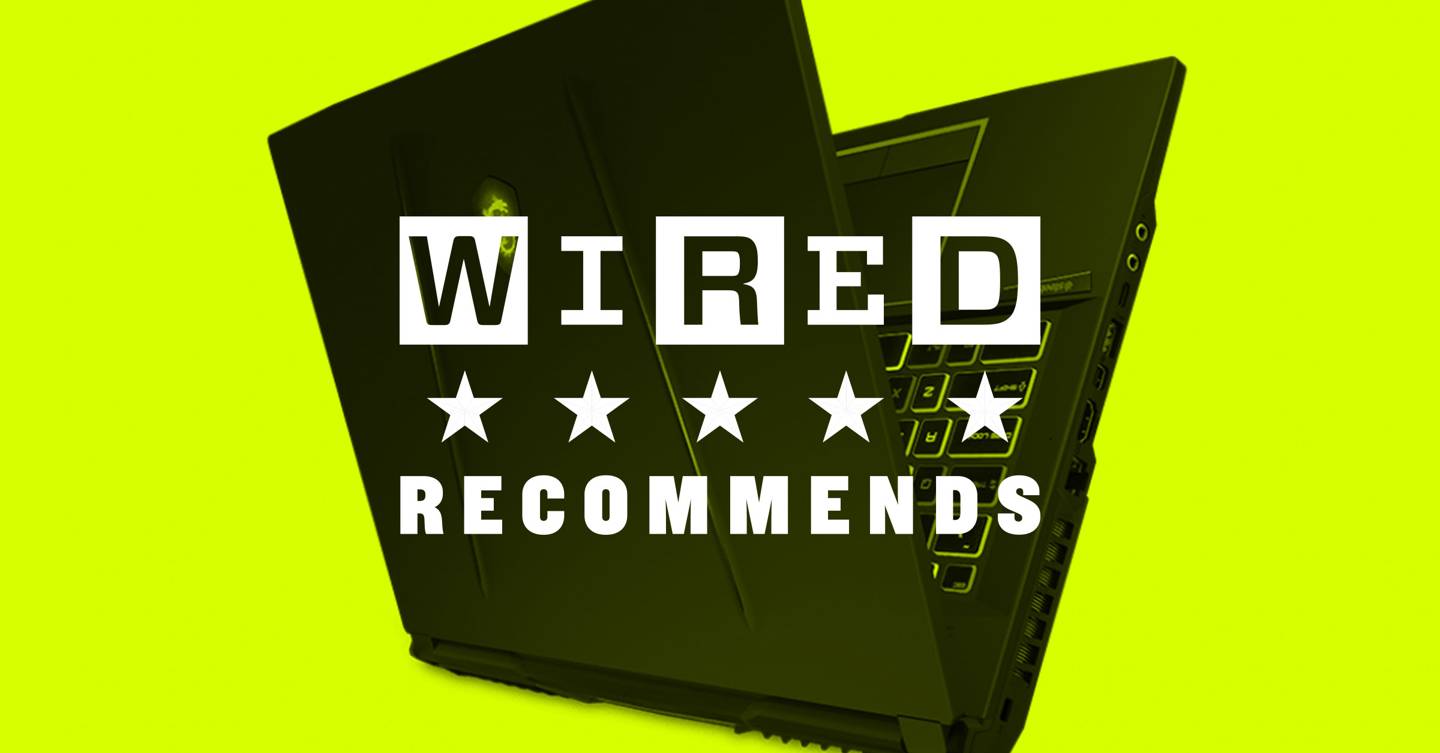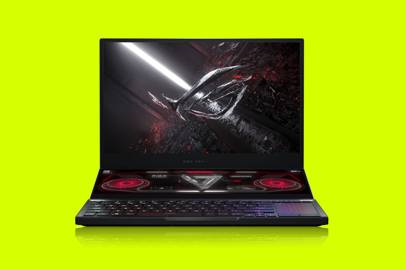
The best gaming laptop for any budget in 2021



When it comes to buying a potent, playable portable, there are more gaming laptops to choose from than ever and there’s never been so much to consider either.
On the outside, you’ve got to think about the screen, the build quality, the keyboard and the trackpad – and the weight and the dimensions if you want to carry your machine around. And then, on the inside, there’s the graphics, the processor and the battery – all important factors.
While it’s tempting to search for a machine to tick every box, though, buying a gaming laptop usually involves compromise – which is why it’s worth examining every aspect before taking the plunge. And, in case you were wondering, it’s just not possible to get a good gaming laptop for under £500. If that’s your budget, we recommend saving up more as our budget options starts at around £900. You may also be interested in our guides to the best laptops and gaming headsets useful.
What’s the best gaming laptop in 2021?
The best gaming laptop we’ve tested is Razer’s Blade 15 (from £1,459). It’s been updated with better graphics and a 300Hz Full HD display with better battery life than most gaming laptops.
View the Razer Blade 15 from £1,459 on Razer
Looking to spend under £1,000? The best cheap gaming laptop you can buy right now is the MSI GF65 Thin (£949). It’s a good-looking machine that’s perfect for 1080p single-player games and e-sports.
View the MSI GF65 Thin for £949 on Scan
And the best money-no-object gaming laptop is Asus’ ROG Zephyrus S17 (£3,099). You get huge performance from this machine with great design and connectivity.
View the Asus ROG Zephyrus S17 for £3,099 on Scan
WIRED Recommends is your definitive guide to the best technology. Every product featured has been properly tested by WIRED reviewers. Read our list of the best gadgets for our favourite pieces of tech in every category.
Razer Blade 15
WIRED Recommends: The best gaming laptop around, now updated with better graphics


Weight: 2.1kg | Size: 19.9mm | Screen: 15.6in 1080p/4K 60Hz-300Hz | RAM: 16GB | Storage: 256GB – 1TB SSD | CPU: 9th Gen/10th Gen Core i7 | GPU: GTX 1660 Ti – RTX 2080 Super | OS: Windows 10 Home
The Razer Blade 15 (from £1,459) has been a very good gaming laptop for a very long time, and these days Razer is spending its time refining and improving this winning formula.
That makes perfect sense when the machine is already this impressive. This latest version – called the Advanced model – has been locked and loaded with Nvidia’s new graphics chips. The RTX 2070 Super and RTX 2080 Super both deliver a significant boost when compared to their predecessors, which means better gaming performance for longer. These new GPUs will handle 4K games and fast-paced esports titles at appropriate framerates.
Elsewhere, the updated Blade 15 includes 10th generation Intel Core i7 CPUs, which means huge processing power is available. These latest models also include upgradeable dual-channel memory, Wi-Fi 6 wireless and large SSDs.
The screen options have been improved, too: the Blade 15 is now available with a 300Hz Full HD display. That makes this the fastest laptop on the market, and perfect for high-end esports and other twitchy, fast games. The Blade also retains its more conventional 144Hz, 60Hz and OLED 4K touch display options – so plenty of versatility is available here.
Around the edge, you’ll find USB 3.2 Gen 2 ports and both Type-C and Thunderbolt 3 connectivity. The Advanced model doesn’t have a Gigabit Ethernet port – you need an adapter – but it does have a card reader.
On the outside, little has changed. The Blade 15 still looks fantastic, with sleek metal and clean lines, and its 2.1kg weight and sub-20mm thickness make it easy to manage. Build quality is excellent, and the specification is rounded out by punchy speakers and a comfortable, fast keyboard with per-key RGB LED backlighting included on the Advanced model.
The Blade does offer better battery life than most gaming notebooks, but it’s still not great in this regard – almost no gaming notebooks really are. You’d also be wise to invest in a USB mouse, as no laptop trackpads are really cut out for gaming.
Prices for this machine start at £1,459 but head north of £2,500 for the priciest specification options. They’re never cheap, then, but they are very good: fast, well-built and classy.
Pros: Huge gaming ability; fantastic, fast-paced screen options; slim, sturdy and good-looking design
Cons: Mediocre battery life; keyboard a little shallow
Price: From £1,459 | Check price on Razer
New gaming laptops in 2021
As we venture deeper into 2021, gaming laptops are beginning to be updated with the latest from AMD, Nvidia and Intel. In particular, we’re excited about new Nvidia Ampere (30-series) models from the likes of Asus, Gigabyte, MSI and more – beefing up many of the stellar gaming laptops already on this list.
While the new Nvidia mobile GPUs, and the improved higher resolution and refresh rates they enable, will be a big draw for many, don’t forget about what you can get on the CPU side. Intel has now released its H-series Tiger Lake chips, bringing improved horsepower to its latest mobile chip technology – promising the highest single-core speeds. AMD is no slouch either, bringing its AMD Ryzen 5000 platform to gaming laptops – bringing the fight for multi-core intensive tasks like content creation and more.
Some of these gaming laptops have hit the market already while some are set to be released shortly or in the next couple of months. We’re keeping an eye on the best of the best and you can expect to see the worthy WIRED Recommends contenders crop up in this list in the near future.
MSI GF65 Thin
The best gaming laptop for less than £1,000


Weight: 1.86kg | Size: 21.7mm | Screen: 15.6in 1080p 120Hz IPS | RAM: 8GB | Storage: 512GB SSD | CPU: Intel 9th Gen Core i5 | GPU: Nvidia GeForce GTX 1660 Ti | OS: Windows 10 Home
The gaming laptop market is full of machines that cost the earth and draw the eye, but the vast majority of us just can’t afford high-end hardware. If you’re on a more realistic budget, the MSI GF65 Thin (£949) is the best gaming laptop that costs less than £1,000.
This machine has plenty going for it. On the inside, it’s got an Nvidia GeForce GTX 1660 Ti graphics core. That GPU uses Nvidia’s latest Turing architecture, and it has the power to play triple-A games at decent quality levels – and to run any esports game at framerates fast enough to make motion look smooth on the 120Hz screen. It’s missing ray-tracing, though, which you’ll only find on beefier Nvidia GPUs.
That 120Hz refresh rate is easily high enough to handle mainstream competitive gaming, and elsewhere the screen has good quality levels, bright colours and a crisp 1080p resolution.
The specification is rounded out by a capable 9th generation Intel Core i5 processor, 8GB of memory and a 512GB SSD. It’s not the sort of hardware that’ll handle much tough work, but it’s powerful enough for day-to-day computing and it doesn’t cause any gaming bottlenecks.
The MSI has pairs of full-size USB ports and Type-C connectors, dual-band wireless and Bluetooth 5.0, and it’s not particularly large – it only weighs 1.86kg and it’s a reasonable 21.7mm thick. That makes it a good companion for LAN parties as well as for home use.
It does look a little dated, and it doesn’t have RGB LEDs – just red backlighting. The keyboard is consistent and satisfying, but you’ll want to use a USB mouse for a better gaming experience. And, similarly, you’ll want a headset for gaming too – the speakers are a little weedy. Don’t expect great battery life, either; if you want a proper gaming session out of this machine, you’ll have to stay close to the mains, just like with most gaming laptop.
For less than £1,000, though, the MSI GF65 Thin is a great option – fast enough for mainstream gaming, with a solid screen and decent components elsewhere.
Pros: Good 1080p gaming power; bright, punchy screen
Cons: Dated looks; no ray-tracing; mediocre battery life and speakers
Price: £949 | Check price on Scan
Asus ROG Zephyrus G14
A compact, effective all-rounder with a superb CPU


Weight: 1.6kg | Size: 17.9mm | Screen: 14in 1080p 120Hz IPS | RAM: 16GB | Storage: 1TB SSD | CPU: AMD Ryzen 9 4900HS | GPU: Nvidia GeForce RTX 2060 | OS: Windows 10 Home
This brand-new notebook is one of the first to emerge with an AMD Ryzen 4000 processor, which is very fast indeed – easily able to handle gaming, and with a monster sixteen cores for handling creative work.
It’s a versatile start, and it means that the Asus ROG Zephyrus G14 (£1,799) is suitable for work and play. Gaming grunt comes from an RTX 2060, which will blast its way through any esports title and any triple-A game at appropriate framerates. The rest of this new machine’s specification is good too: it’s got 16GB of memory, a 1TB SSD and Wi-Fi 6, but no Ethernet.
Unusually, this new Asus is a smaller laptop with a 14in screen. The screen itself has great quality, though – a crisp 1080p resolution, punchy colours and a 120Hz refresh rate that will sate the vast majority of gamers.
The move to a 14in screen does mean that Asus can keep this machine down to just 1.6kg in weight, which is tiny for a gaming laptop. It’s only 17.9mm thick, and its clever hinge tilts the machine up to aid keyboard use and improve airflow. That keyboard is superb: it’s got loads of travel and a crisp, fast typing action.
Elsewhere, this machine serves up surprisingly good speakers, USB-C ports and a smart, understated design. It’ll even last reasonably well in a battery test – it’ll match or beat the Razer Blade 15, for instance. It’s also possible to buy different specifications, with entry-level models nearing £1,000 with understandably weaker components.
The compact Asus does churn out some noticeable fan noise – just like most of its gaming laptop rivals. For £1,799, though, this machine impresses, with great graphics power, a mighty CPU and smart design throughout. It’s a fantastic mid-market option.
Pros: Great gaming ability; huge processing power; compact
Cons: Some noticeable fan noise; smaller screen than many rivals
Price: £1,799 | Check price on Scan
Asus ROG Zephyrus Duo 15 SE
The money-no-object gaming laptop


Weight: 2.48kg | Size: 20.9mm thick | Screen: 15.6in 4K 120Hz IPS | RAM: Up to 32GB | Storage: 2TB SSD | CPU: Up to AMD Ryzen 9 5900HX | GPU: Up to Nvidia GeForce RTX 3080 | OS: Windows 10 Pro
In 2021, many gaming laptops are sold on the promise of their portability rather than their horsepower. That is absolutely not the case for the Asus ROG Zephyrus Duo 15 SE (£3,500) behemoth – a gaming laptop that is designed to wow onlookers and dominate games.
Before we even get to the radical design of this gaming tank, the internal specs are something to admire. The Zephyrus Duo 15 SE can wield the best mobile processor AMD has to offer, in the form of the Ryzen 9 5900HX, as well as Nvidia’s best too – the RTX 3080 mobile GPU. This is the top of the range combo offered by our test unit and the results were stunning to behold. Blockbuster games like Red Dead Redemption 2, Assassin’s Creed Valhalla and more are all playable in 4K, managing above 30 frames per second and with all graphical settings turned up. If you’re looking to take advantage of that 120Hz refresh rate then you’ll have to venture down to 1080p, where you’ll be able to get between 60fps and 100fps depending on the game.
If you’re looking to go beyond games and extend this impressive laptop’s graphical chops to image and video work then that’s well within its capabilities too. Aided by the GPU, the top-of-the-line AMD processor will gobble up most photo and video-editing workloads while intense multitasking won’t trouble the Zephyrus Duo 15 SE either.
Gaming, productivity, media consumption and editing all get a boost from this laptops unique design – offering up a second 14-inch display. Unlike some secondary displays, including some from Asus themselves, this large take on the formula actually feels pretty useful. First off, the resolution matches the main display and the “ScreenPad” is also raised up at an angle to more easily accommodate your eye line. Its substantial space allows for things like chat windows, additional in-game UI, editing timelines and more to sit comfortably within the screen, at a size that allows it to provide plenty of information at a glance.
The Zephyrus Duo 15 SE’s achilles heel is the layout of the keyboard and trackpad. The outlandish design, including that sizeable second screen, means the keyboard is pushed to the front of the base. The positioning means your wrists have no support, making an extra wrist-rest a necessity. The keyboard and trackpad layout is also a little cramped – making the whole experience a tad uncomfortable.
From the price to the unique design, this laptop will certainly only appeal to the chosen few. Those with plenty of money to spare and a desire for a second screen won’t be disappointed with the performance of this specced-out beast. However, an uncomfortable typing experience might turn some away.
Pros: Heavy-duty gaming performance; impressive AMD processor; gorgeous 4K panel; actually useful secondary display
Cons: Poor battery life; flawed keyboard and trackpad
Price: £3,500 | Check price on Ebuyer | Scan
Gigabyte Aero 17
The best gaming machine for 4K gaming and work


Weight: 2.5kg | Size: 21.4mm | Screen: 17.3in 4K 60Hz IPS | RAM: 32GB | Storage: 1TB SSD | CPU: 2.4GHz Intel Core i9-10980HK | GPU: Nvidia GeForce RTX 2080 Super | OS: Windows 10 Home
Around half of gaming laptops are actually used for work as well as play, so it’s no surprise that people don’t just need a powerful GPU from their notebook. If you want a more versatile and productive gaming portable, the Gigabyte Aero 17 is your best option.
There are loads of specification options available for the Aero 17 – the most affordable models start at £1,599, and the priciest options rise all the way up to £4,499. Understandably, component options vary wildly, although happily you’re always getting a very good Intel CPU and Nvidia GPU.
The model we’d recommend is the XB-9UK4450SP (£3,198). It’s got an RTX 2070 Super that’ll play the vast majority of top-tier games well at 4K. And, because this is technically a laptop for work, it’s got a fast, capable 10th Gen Core i9 CPU, a mammoth 32GB of memory and a 1TB SSD. The specification is rounded out by USB 3.2 and Thunderbolt 3, and you get Wi-Fi 6 and beefed-up Gigabit Ethernet.
The screen itself doesn’t just offer lots and lots of pixels. The crisp panel has X-Rite Pantone certification, so it’s ideal for both gaming and handling colour-sensitive work tasks – those colours are stunningly accurate, and contrast is excellent. The panel also has tiny bezels, and its 17.3in diagonal aids immersion.
The keyboard is crisp and comfortable, with a numberpad and RGB LEDs, and the trackpad includes a fingerprint reader. Impressive, Gigabyte’s 4K machine weighs a reasonable 2.5kg, and it’s 21.4mm thick – so it’s not as bulky as you’d easily assume. Because this is technically a work laptop, it looks smart and modest, without too much of an over-the-top, gamer design.
The RTX 2070 Super model is a great all-rounder, but also pay attention to the YB-8UK5450SP – this model costs £3,299, and it upgrades to an RTX 2080 Super graphics core for even more power. Also bear in mind that this hefty machine doesn’t have 2.5Gbps Ethernet, and that battery life isn’t great; to get anything done properly on this machine, you’ll have to plug in.
Those are our only issues with this machine, though. It’s got a stunning 4K screen and lashings of power alongside great features, providing a stellar high-resolution experience for gaming and work.
Pros: Huge performance levels; stunning, accurate 4K screen; sturdy, subtle exterior
Cons: Not great battery life; no 2.5Gbps Ethernet
Price: From £1,599 | Check price on Scan | Overclockers
Aorus 15-X9
Terrific performance, solid specs


Weight: 2.4kg | Size: 24.4mm thick | Screen: 15.6-inch 1080p | RAM: 8/16/32GB | Storage: 512GB + 2TB | CPU: Intel Core i7-8750H | GPU: Nvidia RTX 2070 | OS: Windows 10 Pro
The Aorus 15-X9 (£1,694) is a slightly ancient option compared to the rest of this list but you can still get hold of it.
The Aorus relies on a design of dark metal, with a slick central hinge and a couple of metallic slashes on the lid. It also has an admirable build quality, with little give in its aluminium panels.
Gaming ability comes from the familiar Nvidia GeForce RTX 2070, which will play all of today’s top titles at 1080p and at good quality settings. It’ll also play most games at beyond 100fps and it’s partnered with a Core i7-8750H processor. Neither components are ground-breaking, but they’re excellent – there’s a reason why they’re found in hundreds of different laptops. You get a 512GB SSD, 16GB of memory, dual-band wireless, a microSD card slot and three USB 3.1 ports alongside a Type-C connector.
The 1080p screen runs at 144Hz, but it doesn’t have Nvidia’s smoothing and sharpening G-Sync tech. Nevertheless, gaming will be smooth, and the panel serves up tremendous colour accuracy alongside acceptable contrast. The keyboard has a solid base and a snappy action, and the trackpad does an excellent job of mimicking the light, fast response of a proper gaming mouse.
By default, the Aorus runs in its maximum fan mode, which is far too loud. Use the X9’s normal mode, and the noise is more manageable. It’s much easier to mask, and without a significant reduction in gaming performance. That’s this machine’s only misstep.
Elsewhere, it’s excellent. It has lashings of power, a good screen, solid ergonomics and great design, and the £1,999 price isn’t bad. This is one of the best gaming laptops around, and a superb 15.6-inch alternative to the larger 17.3-inch screens on test.
Pros: Excellent 1080p gaming; solid specs; good ergonomics
Cons: Can be too loud; keyboard is a tad shallow
Price: From £1,694 | Check price on Amazon
Gaming laptop buying guide
Your first port of call should be to identify which graphics card you’re going to need. New Nvidia cards are now firmly entrenched in the majority of laptops, and top of the laptop stack is the RTX 2080 Super. It’s always tempting to want the best hardware, and it’s worth seeking this if you want to play at top graphics settings, at 4K or at high frame-rates. However, if you’re an e-sports gamer or want to play older titles then it’s going to be overpowered, and not worth the cash. Also look out for the power saving Max Q variant of the RTX 2080 and AMD’s Navi 2X graphics cards, now rumoured to be due in October 2020.
The RTX 2070 is a great, balanced option that will handle virtually everything, while the RTX 2060 is a capable chip for 1080p gaming at the highest quality levels. You’ll also find cheaper laptops with last year’s Nvidia chips – ideal for e-sports and modest 1080p games.
If you’re going to be running tough games or want to do some work on your machine, you’ll also need a Core i7 CPU. It’s always worth getting 16GB of memory if you can afford it, and you should find a laptop with an SSD unless you’re on a very tight budget.
There’s a lot to think about on the outside. You’ll need to consider the screen: a 1080p panel won’t be as sharp as a 4K display, but it’ll be easier to run games at the former resolution. Similarly, it’s only really worth opting for a high-refresh-rate panel if you have a GPU that can run games at beyond 100fps.
Take a close look at the dimensions and weight if you’re going to take the machine on the road, and if you want to connect a mouse and other peripherals make sure you’ve got plenty of USB connections. Also examine the display outputs, because only certain connections will properly output to high-resolution screens or VR headsets.